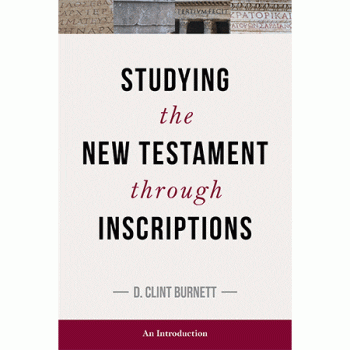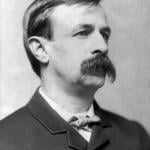Richard Bauckham’s new book is Who is God? Key Moments of Biblical Revelation (Grand Rapids, MI: Baker, 2020).
If someone asked you to talk to a group of university students about God, what passage of the Bible would you go to and why?
If I could really only choose one passage, I think it would be the Prologue to the Gospel of John, because it so clearly relates the Old Testament’s portrayal of God to the incarnation. In my book, it features in both chapter 1 (The Revelation of the Divine Presence) and chapter 3 (The Revelation of the Divine Character). In the first chapter, I follow the theme of the divine presence, first revealed in Jacob’s dream at Bethel, through the roles of the tabernacle and the temple in Israel, and, among other New Testament texts, I trace a culmination in John 1:14 (“the Word became flesh and dwelled among us”). In chapter 3, where the key text is the revelation of God’s character to Moses (Exod 34:5-8), I return to John 1:14, this time to the phrase “full of grace and truth,” which is an echo of Exodus 34:6 (“abounding in steadfast love and faithfulness”). The character of God, of which Moses could only hear, was seen in the human life and person of Jesus. In the talk I could also show how the God who, in Genesis 1, created all things by his word is seen in the Prologue’s re-reading of Genesis to include in his unique identity the Word that became flesh in incarnation. But I would also have to point out that the Prologue is not fully Trinitarian. For the Spirit we would have to go elsewhere (including elsewhere in this Gospel).
How is Jacob’s dream at Bethel, according to Genesis 35, paradigmatic for how we think of God’s presence?
A key point I make about the presence of God in the Bible is that the Bible is not much interested in what has been commonly understood as God’s omnipresence, especially if we think of that as some kind of static, universal phenomenon. God’s presence is personal and active. He makes himself present wherever, whenever and to whomever he chooses, in many different ways. In Jacob’s dream Jacob sees the Lord, not, as some translations have it, standing “above it” (the ladder), but, in the more likely meaning, “beside him” (Jacob). God has come down the ladder to be with Jacob. This coheres with God’s promise to Jacob that he will be “with him.” This “being-with” is a paradigmatic form of God’s presence that characterizes God’s presence throughout Scripture, whether God is said to be with individuals or with his people (as in the tabernacle and the temple). Wherever the little word “with” links God and humans it is a very powerful word. Its significance culminates, first, in the name Immanuel that names Jesus “God with us,” and, finally, in the eschatological presence of God “with” all his “peoples” in the new creation (Rev 21:3).
Why does the biblical tradition, seen especially in Exodus 3 with Moses and the burning busy, place so much weight on the divine name? What does that have to do with christology?
There are several ways one can answer the question “Who is God?” One could talk about what God is like (character) or what God has done and is doing. But in the case of human persons, the most obvious answer to a question like “Who is that?” is to give the person’s name. When we don’t know much else about someone, the name at least distinguishes that individual uniquely. When we know a lot about someone, the name serves to sum up all that we know, again making clear that we are referring to that specific individual. In a world of very many purported gods, the God of Israel, the true God, was specifically this God, YHWH. In a world of generalized divinity, the God of Israel and of Jesus Christ is still specifically YHWH, now also known as the Father of Jesus Christ, Jesus his Son, and the Spirit of Christ. By revealing his Name to his people, YHWH authorized his people Israel to call on him in prayer – which is probably the most important function of the Name in the life of Israel. In a sense it was by revealing his Name to them that God made him his people, the people of this God. The Name identifies him. It sums up his identity. So when Jesus is given the Name (Phil 2:9; Heb 1:4) it signifies his ”inclusion in the unique divine identity” (as I have put it my work on New Testament Christology).
In what sense can we consider the Bible, Old and New Testaments, to be “Trinitarian”?
This is probably the most difficult of your questions! That God is Trinity is not something God revealed as an abstract truth, as though he said to some prophet, “I am three persons in one divine essence.” It emerged as the only adequate way of characterizing God as he became known in the story of Jesus. That’s why, in my chapter on “The Revelation of God as Trinity,” I have focused on the key moments of revelation in Mark’s Gospel. So we should not expect to find the Trinity in the Old Testament. In the Hebrew Bible God is consistently portrayed by analogy with a single human person (except when impersonal images, like the Rock, are used). The New Testament, of course, fully endorses that portrayal of God, but also complexifies it. The unique identity of God is seen now to include Jesus the Son and the Holy Spirit, and the latter begins to be understood not only as a way in which God acts and is present, but also as an acting subject. It is true that early Christians, in the light of this revelation, looked back at the Old Testament and found intimations of the Trinity there. There is not much of this in the New Testament, but there is a lot in the patristic writers, beginning with Justin. In my view, we need to read the Old Testament both forwards and backwards – forwards in its original, pre-Christian integrity, and backwards in the light of God’s revelation in Jesus Christ. Reading forwards, I do not think the Old Testament writers conceive of any sort of personal plurality in God. I take the divine “we” of Genesis 1-11 to be a “plural of majesty,” not the expression of genuinely plural subjects. Aspects of God’s being (such as Wisdom, Word and Spirit) are occasionally personified, but I take this to be a figure of speech. They do suggest some kind of distinctions in God, but not personal plurality, as Christians came to understand them. An example of reading backwards in the New Testament is John 1:1-14, where the divine Word, not necessarily read as personal at first, is seen to be personal as the passage moves on. It is the incarnation that enables the author to identify the (impersonal) Word as the (personal) Son, and consequently, he drops the term Word and through the rest of the Gospel uses only the term Son. This author, I think, is quite clear that what he is doing is reading Genesis 1:1-4 “backwards.” But how far should we follow his example in respect of the Trinity? For example, is the Trisagion, the song of the seraphim in Isaiah 6 (“Holy, holy, holy is the Lord”) an intimation of the Trinity, as many throughout Christian history have thought?
I know you’ve written a lot of Divine Identity and Christology, but where does the Holy Spirit fit in?
Yes, I have kept Christology largely separate from pneumatology for the sake of clarity. The way in which the human Jesus Christ was included in the divine identity was very different from the way in which the divine Spirit came to be included as a third acting subject (rather than just a way of thinking of God’s activity and presence). This focus on Christology without pneumatology was procedural. I will just mention an essay in which I have treated the Trinity in John’s Gospel: “The Trinity and the Gospel of John,” in The Essential Trinity: New Testament Foundations and Practical Relevance, ed. by Brandon D. Crowe and Carl R. Trueman (London: Inter-Varsity Press [Apollos] 2016), 83-106. Long ago, in my book The Theology of the Book of Revelation, I claimed that that book has one of the most fully Trinitarian accounts of God in the New Testament.
What are you working on now in your writing time?
A book provisionally called Enoch and the Son of Man. Its starting-point is the Parables of Enoch, in respect of which my early work on Christology left me with some unfinished business. After a period of (reasonably justified neglect) there has recently been a resurgence of interest in the Parables of Enoch, and renewed claims that the work is highly relevant to the study of Jesus and the New Testament. I disagree. But I try to place the work in relation to other Jewish interpretations of Daniel 7 in the Second Temple period. About that I have some quite new proposals, which (in the work I have not yet done!) will make a difference to our understanding of the expression “son of man” in the Gospels. I think it is clear that “the son of man” was never a title or a concept or even a recognized way of referring to the figure in Daniel 7:13.











